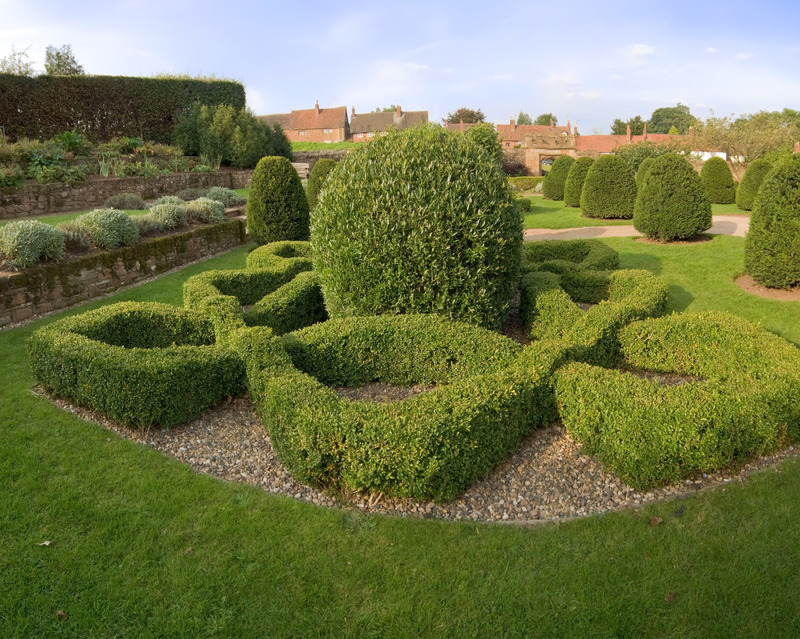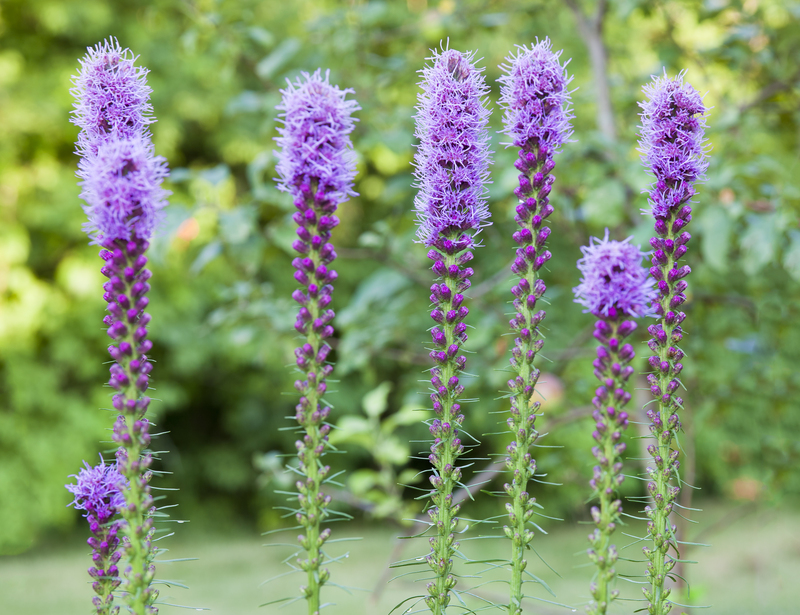Growing Herbs with Purpose: A Garden Guide
Posted on 29/06/2025
Growing Herbs with Purpose: A Garden Guide
Imagine stepping into your garden, surrounded by vibrant greenery and the invigorating aroma of fresh herbs. Whether you're looking to add flavor to your meals, boost your health naturally, or support pollinators in your backyard, growing herbs with purpose can transform your space into a personal haven of productivity and beauty. This comprehensive guide will walk you through everything you need to know about growing herbs with intention--from selecting the right varieties to planting, maintaining, and harvesting your thriving garden.
Why Grow Herbs With Purpose?
Herbs have been cherished for centuries, not just for their culinary uses, but also for their diverse medicinal, aromatic, and ecological benefits. Adopting a purposeful approach to herb gardening maximizes the potential of your green space, ensuring that every plant you cultivate serves a unique and valuable function.
- Culinary benefits: Fresh herbs add unique flavors and nutrients to your meals.
- Medicinal properties: Many herbs offer natural remedies that can support overall wellness.
- Ecological boosts: Certain herbs attract pollinators, deter pests, and improve soil health.
- Economic advantages: Growing your own herbs can save money and reduce food waste.
- Aesthetic value: Herb gardens are beautiful and can enhance the ambiance of any outdoor (or indoor) area.

Planning Your Purposeful Herb Garden
Before planting, it's essential to define your goals. Do you want a culinary herb garden, a medicinal apothecary, or an eco-friendly pollinator paradise? Understanding the purpose behind your herb garden will help you make informed decisions and ensure your efforts are rewarding.
Step 1: Assess Your Space
- Sunlight: Most herbs thrive in at least 6 hours of sunlight daily. Observe your garden or windowsill for optimal sun exposure.
- Soil: Well-draining, loamy soil is ideal. Test your soil or consider raised beds and containers if your ground is heavy or clay-based.
- Accessibility: Choose a site close to your kitchen for culinary herbs, or near your favorite relaxation area for aromatic and medicinal varieties.
Step 2: Define Your Purpose
- Culinary: If your main aim is cooking, focus on flavorful, versatile herbs like basil, parsley, thyme, and chives.
- Medicinal: Interested in natural remedies? Consider growing echinacea, chamomile, calendula, and lemon balm.
- Pollinator Support: To attract butterflies and bees, include herbs like lavender, oregano, borage, and dill in your plan.
- Companion Planting: Some herbs, such as mint, marigold, and sage, help repel pests and strengthen neighboring plants.
Selecting the Right Herbs to Grow
Choosing suitable herbs is essential to a purposeful herb garden. Here's a quick overview of popular and practical herbs according to their primary purposes:
Culinary Herb Favorites
- Basil: Essential for Italian and Thai cuisine, basil thrives in warm, sunny places.
- Parsley: Easy to grow and packed with vitamins, perfect for garnishes and salads.
- Thyme: A hardy perennial with a robust flavor, thrives in well-drained soil and full sun.
- Rosemary: Aromatic shrub with needle-like leaves, ideal for roasting and grilling.
- Mint: Vigorous and refreshing, use in teas, desserts, and drinks. Best grown in containers to control spreading.
- Chives: Delicate onion flavor, great for salads and soups.
Medicinal and Wellness Herbs
- Chamomile: Renowned for its calming properties, best for herbal teas.
- Lemon Balm: Eases stress and supports sleep, easy to grow in most climates.
- Calendula: Heals cuts and soothes skin; flowers can be made into balms.
- Echinacea: Boosts immune strength; stunning flowers support pollinators as well.
- Sage: Traditional remedy for sore throats and inflammation.
Herbs for Pollinators and Garden Health
- Lavender: Fragrant and drought-resistant, attracts bees and butterflies.
- Borage: Blue, star-shaped flowers provide nectar and benefit nearby veggies.
- Dill: Popular with swallowtail butterflies; use leaves and seeds in pickles.
- Oregano: Groundcover that attracts pollinators and deters pests.
Starting Your Herbs: Seeds, Cuttings, or Plants?
Herbs can be started in several ways:
- Seeds: Most economical, but some varieties (like rosemary and lavender) are slow to germinate.
- Cuttings: Speed growth by taking cuttings from established plants--mint, basil, and oregano root easily.
- Transplants: Buy starter plants from nurseries for a head start in your herb garden.
Tip: For beginners, a combination of seeds and starter plants can yield both immediate and long-term results!
How to Plant Herbs for Purpose
Caring for Culinary Herbs
- Spacing: Ensure each plant has enough room (6-18 inches apart, depending on variety), allowing for airflow and easy harvest.
- Watering: Herbs dislike soggy roots. Water when soil is dry an inch below surface, ideally in the morning.
- Harvesting: Trim regularly to encourage bushier growth and prevent flowering (which can make some herbs bitter).
- Feeding: Use organic compost or a balanced fertilizer every few weeks during their growing season.
Growing Medicinal Herbs Safely
- Know Your Plants: Research each medicinal herb to learn appropriate uses, potential side effects, and contraindications.
- Organic Practices: Avoid synthetic chemicals; opt for compost and natural pest control to keep your herbs pure.
- Drying and Storage: Harvest at peak and dry in a cool, shaded area. Store in airtight glass jars away from sunlight.
- Consult with Professionals: If planning to use herbs medicinally, consult with a qualified herbalist or healthcare provider for safety.
Designing a Pollinator-Friendly Herb Patch
- Mix Flower Types: Choose single-flowered (easily accessible) varieties to attract diverse pollinators.
- Continuous Bloom: Stagger plantings so something is always in flower, providing food for bees and butterflies.
- Avoid Pesticides: Pesticides can harm beneficial insects--use physical barriers or hand-pick pests instead.
- Water Access: Provide a shallow basin of water with rocks for pollinators to land and drink.
Herb Garden Layout Ideas for Maximum Benefit
Your herb garden can be beautiful, productive, and practical. Here are some layout options for herb gardening with a purpose:
Traditional Rows
- Great for larger spaces. Separate each type for easy identification and harvest.
Herb Spiral
- Build a mound in a spiral shape. Place drought-tolerant herbs (like rosemary and thyme) at the top and moisture-loving herbs (like basil and parsley) at the bottom.
Container Gardens
- Ideal for patios, balconies, or small yards. Group herbs with similar needs together in pots or planters.
Mixed Beds with Companion Plants
- Integrate herbs alongside vegetables and flowers. Basil with tomatoes, chives with carrots, and dill near cucumbers are classic combinations.
Don't forget to include pathways for easy access and maintenance, and keep labeling your herbs to avoid confusion as they grow!
Caring for Your Purposeful Herb Garden
Watering and Feeding
- Most culinary and medicinal herbs prefer to dry out between waterings.
- Mulch helps retain soil moisture and suppress weeds.
- Feed sparingly--too much fertilizer can dilute essential oils, resulting in less flavorful or aromatic herbs.
Weeding and Mulching
- Regularly hand-weed to prevent competition.
- Apply organic mulch for weed control, moisture retention, and to give your garden a tidy appearance.
Pest and Disease Control
- Encourage beneficial insects (ladybugs, lacewings) to control pests naturally.
- Rotate plantings and remove infected plants promptly to prevent the spread of disease.
- Use neem oil, insecticidal soap, or garlic spray for stubborn infestations.
Harvesting and Preserving Your Herb Bounty
Best Practices for Harvesting Herbs
- Harvest in the morning, after dew dries but before the sun gets too hot, for maximum flavor and potency.
- Use clean, sharp scissors or pruners to avoid damaging the plant.
- Never remove more than one-third of a plant at a time to allow for quick recovery.
Preservation Methods
- Drying: Tie small bunches and hang in a well-ventilated, shaded area. When crisp, crumble leaves and store in glass jars.
- Freezing: Chop fresh herbs and freeze in ice cube trays with a little water or olive oil.
- Infusing: Make simple oils, vinegars, or tinctures to extend shelf life and infuse flavors.
PURPOSEFUL HERB GARDENING IN SMALL SPACES
You don't need an acre to grow herbs with intention. Windowsills, balconies, rooftops, and even vertical wall planters can become flourishing herb gardens! Try these ideas:
- Vertical Gardens: Stackable pots or wall pockets work well for compact areas.
- Hanging Baskets: Great for trailing herbs like thyme and oregano.
- Community Plots: Share space and herbs with neighbors in shared gardens.
- Smart Indoor Gardens: Use LED lights and hydroponic systems for year-round herbs inside.
Creative Uses For Your Homegrown Herbs
- Culinary Masterpieces: Transform simple dishes with fresh pesto, infused oils, homemade herbal teas, and more.
- Natural Remedies: Craft calming teas or balms for skin care and stress relief.
- Aromatic Decor: Make fragrant bouquets, potpourri, or wreaths to scent your home naturally.
- Garden Gifts: Share dried herbs, custom spice blends, or potted cuttings with friends and family.

Tips for Troubleshooting Common Herb Garden Problems
- Leggy Growth: Indicates poor light--move to a sunnier spot or supplement with grow lights.
- Yellowing Leaves: Often a sign of overwatering--ensure proper drainage and reduce watering frequency.
- Pest Issues: Inspect regularly and remove pests by hand, or use natural treatments as listed above.
- Fungal Diseases: Increase airflow, space plants properly, and avoid wetting leaves during watering.
Conclusion: Grow with Purpose, Reap the Rewards
Whether you're passionate about cooking, health, or ecological wellness, cultivating herbs intentionally will enrich your life and your garden. By planning your space, understanding each plant's role, and caring for your crops thoughtfully, you can enjoy the benefits of a purposeful herb garden year-round. Don't forget to experiment, observe, and grow your knowledge alongside your herbs--the most rewarding gardens reflect the hearts and hands that tend them.
Ready to get started? Gather your seeds, plan your plot, and experience the transformative power of growing herbs with purpose!

